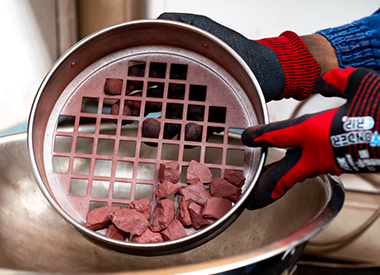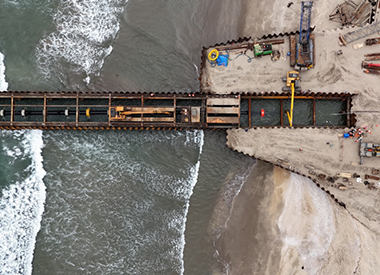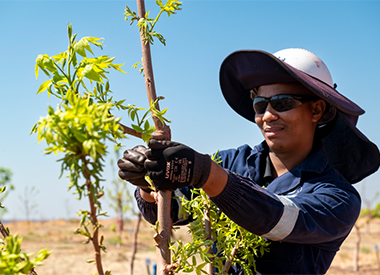Anglo American’s approach to sustainability consists of mutually reinforcing elements that aim to positively transform how our stakeholders experience our business, both locally and globally, and ultimately leave a much-reduced physical footprint.
Creating pathways to the Water-less Mine
This approach is reflected in the work we are doing on Concentrating the Mine™ to create pathways to the Waterless Mine.
Through an integrated system of technologies including coarse particle recovery (CPR), novel leaching processes, such as SandLixTM, and hydraulic dewatered stacking (HDS), we are reducing fresh water usage, moving to closed-loop and ultimately dry processing in our operations, thereby eliminating the need for ‘wet’ tailings and instead creating stable, dry, economically viable land.
Full-scale CPR, HDS and novel leaching facilities are now in operation, at an advanced construction stage, or are being planned at a number of our operations in South America and southern Africa.
Reducing our waste footprint and improving water efficiency
Complementing the roll-out of these technologies, we are building a new waste-filtration plant at our Minas-Rio iron ore mine in Minas Gerais, Brazil.
However, unlike most of our assets, which are located in water-constrained areas, Minas-Rio is seldom short of water.
But here, too, it is important that we manage water more efficiently through various initiatives to limit our dependence on fresh water, including reducing substantially the amount of waste material that we send to wet TSFs.
In alignment with our Sustainable Mining Plan and our commitment to environmental stewardship, Anglo American is building a new, highly automated waste-filtration plant at the Minas-Rio mine site.
Due to be commissioned in early 2026, and currently 50% complete, the plant will help to reduce the total waste deposited on the mine’s tailings dam by up to 85%, reducing stress on and extending the life of the facility.
This will ultimately lessen our waste footprint, and minimise water wastage.
This will be achieved through reducing the volume of tailings through their compaction into a denser, solid form. The filtration plant will use vacuum-filtration technology to separate out and recycle water from tailings, and then re-use the water in the iron ore processing operation.
This should lead to enhanced operational water balance, which will help to lengthen the lifespan of the dam, as the dam will be under-utilised relative to the site’s current TSF arrangements, as well as more stable production at the site.
Wider benefits
The plant will also support regional economic development through the employment of a local workforce, and working with local suppliers.
Around 20% of the 3,760 people working on the construction phase are from local communities; when completed, the plant will need around 340 permanent employees, with local people expected to account for around 60% of them.




